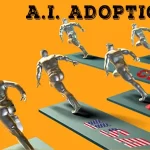Gamification in eLearning brings forth the element of fun in the learning process. With the changing trends in the domain of education, gamification in eLearning is emerging as an extremely effective training tool for learning. We have already discussed the meaning and significance of gamifying the learning process in our previous article on Gamification. In the following article, we shall be discussing the scope and development of gamification in eLearning.
What is Gamification?

Gamification in eLearning refers to applying gaming mechanics to teaching methodologies to create an engaging learning experience. The term gamification was advanced by Nick Pelling in 2002. Though gamification can be employed in traditional classroom teaching through various activities, it has a wider application in eLearning as well.
Learners engage in competitions where the rewards can be points, levels, badges, gift cards, vouchers, and so on. Some of these are a part of typical video game mechanics. The learners engage in learning activities, and they become a part of the game dynamics where every participant is connected.
Moreover, this connection fosters positive motivation, and the participants advance by collaborating. Gamification stokes the innate interest and curiosity of learners as they participate in learning activities, and it encourages them to be consistent in their learning and knowledge application.
How to use Gamification in eLearning?
Education has come a long way from traditional classrooms. As a result, with the ubiquity and evolution of technology, online learning platforms are becoming increasingly popular.
A major deterrent to eLearning is that it does not allow learners to directly interact with the trainer/teacher during lesson delivery.
Typically, a teacher aims to inculcate knowledge, motivates learners, and tries to ensure that the gained knowledge is retained. This may prove to be particularly difficult when lessons are provided over the internet. As a result, the very fundamental requirement of learner participation in the teaching-learning process may go unfulfilled.
This is where gamification steps in.
Gamification in eLearning fills this gap by creating a competitive environment promoted by incentives that motivate the learners to succeed. But then how is a game different from gamified learning?
The answer lies in the fact that gamified lessons employ game mechanics that induce game-like reactions toward learning. Similar to a video game, factors such as time constraints/countdowns and/or rewards are added to learning. These features provide learners a game-like experience, which employs game mechanics for engaging knowledge delivery.
The gamification of a lesson accounts for a better understanding and retention of knowledge. The reason is that it is a learner-centered outlook and an emerging new aspect of teaching and learning.
Demand for Gamification in eLearning
Teaching in a virtual classroom is markedly more demanding than teaching in a traditional classroom. Delivering a credible lesson in a virtual classroom requires comparatively more effort and preparation on the part of teachers.
Gamification in eLearning eases this additional pressure on teachers.
Gamification allows and serves to fulfill the fundamental requirements of classroom learning. The pointers that lead to a demand for gamification in eLearning are:
1. Foster interest
A gamified lesson develops the interest of learners, thus ensuring effective lesson delivery in a virtual classroom.
2. Hook the learners
A lesson designed through gamification techniques grabs the attention of learners faster than traditional lessons. This ensures that learners are hooked to what is being taught in the class and participate actively.
3. Stimulate better retention
An interesting lesson induces certain emotions in the learners that stimulate reactions. These reactions lead to better retention of concepts.
4. Practical application
In the gamified virtual learning approach, students learn through experience. This creates a stimulus for an effective practical application of the knowledge gained.
5. Assurance of progress
Gamification keeps track of a learner’s progress. This eventually motivates students to work harder and to discover and apply new knowledge.
Gamification in eLearning has become a major avenue for learning in the current world. It has opened doors for the development of highly effective teaching-learning processes, where learners gain knowledge through experiential learning. Gamification can thus be considered a futuristic approach to learning.
Read Part II of this series to learn more about the applications of gamification in eLearning.
Read more about gamification here.
Image source: Shutterstock
eLearning/Classroom Learning image designed using Freepik
Visit our blog for further reading on Gamification.
Create. Engage. Inspire.


















